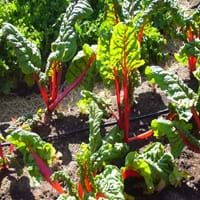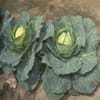Life Span
Biennial or Perennial
Perennial
Origin
Europe
Southeastern Asia, Melanesia, Micronesia
Types
Leaf beet, Seakettle beet, Spinach beet
Jackfruit, Breadnut, Figs
Habitat
Cultivated Beds
Lowland evergreen rainforest, Riverine swamp forest
USDA Hardiness Zone
4-8
10-15
Sunset Zone
A1, A2, A3, H1, H2, 1a, 1b, 2a, 2b, 3a, 3b, 4, 5, 6, 7, 8, 9, 10, 11, 12, 13, 14, 15, 16, 17, 18, 19, 20, 21, 22, 23, 24
H2
Habit
Clump-Forming
Oval or Rounded
Flower Color
Red, Green
Yellow green
Flower Color Modifier
Bicolor
Bicolor
Fruit Color
Tan
Yellow, Green, Yellow green, Brown
Leaf Color in Spring
Dark Green, Green, Orange, Red, White, Yellow
Dark Green
Leaf Color in Summer
White, Yellow, Red, Green, Orange, Dark Green
Dark Green
Leaf Color in Fall
White, Yellow, Red, Green, Orange, Dark Green
Dark Green
Leaf Color in Winter
Not Available
Light Green
Leaf Shape
Heart-shaped
Irregular
Plant Season
Spring, Summer, Fall, Winter
Spring, Summer, Fall, Winter
Sunlight
Full Sun
Full Sun, Partial Sun
Type of Soil
Loam, Sand
Loam, Sand
The pH of Soil
Neutral, Alkaline
Acidic, Neutral, Alkaline
Soil Drainage
Well drained
Average
Bloom Time
Late Spring, Early Summer, Summer
Indeterminate
Tolerances
Drought
Drought
Where to Plant?
Ground
Ground
How to Plant?
Seedlings
Grafting, Rooted stem cutting, Seedlings
Plant Maintenance
Medium
Medium
Watering Requirements
Average Water Needs
Average Water Needs, Never Over-water, occasional watering once established, Water daily during growing season, Water Deeply
In Summer
Lots of watering
Lots of watering
In Spring
Moderate
Moderate
In Winter
Average Water
Average Water
Soil pH
Neutral, Alkaline
Acidic, Neutral, Alkaline
Soil Type
Loam, Sand
Loam, Sand
Soil Drainage Capacity
Well drained
Average
Sun Exposure
Full Sun
Full Sun, Partial Sun
Pruning
Remove damaged leaves, Remove dead branches, Remove dead leaves
Prune every year, Prune if you want to improve plant shape, Remove branches, Remove damaged leaves, Remove dead branches, Remove dead leaves, Remove dead or diseased plant parts
Fertilizers
Apply 10-10-10 amount
20-20-20 amount, All-Purpose Liquid Fertilizer
Pests and Diseases
Cercospora leaf spot, Damping off, Darkling beetles, Downy mildew
Red blotch
Plant Tolerance
Drought
Drought
Flowers
Insignificant
Yes
Flower Petal Number
Not Available
Not Available
Foliage Texture
Coarse
Coarse
Foliage Sheen
Glossy
Glossy
Attracts
Insects
Birds, Not Available
Allergy
dark circles, Diarrhea, Runny nose, Vomiting, wheezing
allergic reaction
Aesthetic Uses
Ground Cover
Not Used For Aesthetic Purpose
Beauty Benefits
Moisturizing, Remove blemishes, Slow downs aging, Speed hair growth
Good for skin, Promotes Healthy Hair, Removes dandruff, Speed hair growth
Environmental Uses
Air purification
Air purification, Nesting sites for birds, Shadow Tree, Wildlife
Medicinal Uses
Antitumor, Carminative, Haemostatic, Stomachic, Tonic
Cancer, cholesterol-lowering, Heart problems, High cholestrol, Immunity, Skin Disorders, Weight loss
Part of Plant Used
Leaves, Root
Fruits
Other Uses
Cultivated for fodder, Eaten as a pot herb, Used to make juice
Used As Food, Used for its medicinal properties
Used As Indoor Plant
No
No
Used As Outdoor Plant
Yes
Yes
Garden Design
Bedding Plant, Container, Edible, Herb / Vegetable, Mixed Border
Edible, Feature Plant, Fruit / Fruit Tree, Shade Trees, Tropical
Botanical Name
BETA vulgaris ssp. cicla
ARTOCARPUS altilis
Common Name
Swiss Chard
Breadfruit
In Hindi
Swiss Chard
Breadfruit Tree
In German
Swiss Chard
Brotfruchtbaum
In French
Chard suisse
Breadfruit Arbre
In Spanish
Acelgas
árbol del pan
In Greek
Σέσκουλο
αρτόδεντρο Δέντρο
In Portuguese
Acelga suíça
Árvore de fruta-pão
In Polish
Boćwina
Breadfruit drzewo
In Latin
Swiss Chard
Arum
Phylum
Magnoliophyta
Magnoliophyta
Class
Magnoliopsida
Magnoliopsida
Order
Caryophyllales
Urticales
Family
Chenopodiaceae
Moraceae
Clade
Angiosperms, Core eudicots, Eudicots
Angiosperms, Eudicots, Rosids
Tribe
Cyclolobeae
Artocarpeae
Subfamily
Betoideae
Not Available
Importance of Swiss Chard and Breadfruit
Want to have the most appropriate plant for your garden? You might want to know the importance of Swiss Chard and Breadfruit. Basically, these two plants vary in many aspects. Compare Swiss Chard and Breadfruit as they differ in many characteristics such as their life, care, benefits, facts, etc. Every gardener must at least have the slightest clue about the plants he wants to plant in his garden. Compare their benefits, which differ in many ways like facts and uses. The medicinal use of Swiss Chard is Antitumor, Carminative, Haemostatic, Stomachic and Tonic whereas of Breadfruit is Cancer, cholesterol-lowering, Heart problems, High cholestrol, Immunity, Skin Disorders and Weight loss. Swiss Chard has beauty benefits as follows: Moisturizing, Remove blemishes, Slow downs aging and Speed hair growth while Breadfruit has beauty benefits as follows: Moisturizing, Remove blemishes, Slow downs aging and Speed hair growth.
Compare Facts of Swiss Chard vs Breadfruit
How to choose the best garden plant for your garden depending upon its facts? Here garden plant comparison will help you to solve this query. Compare the facts of Swiss Chard vs Breadfruit and know which one to choose. As garden plants have benefits and other uses, allergy is also a major drawback of plants for some people. Allergic reactions of Swiss Chard are dark circles, Diarrhea, Runny nose, Vomiting and wheezing whereas of Breadfruit have allergic reaction respectively. Having a fruit bearing plant in your garden can be a plus point of your garden. Swiss Chard has no showy fruits and Breadfruit has showy fruits. Also Swiss Chard is not flowering and Breadfruit is flowering. You can compare Swiss Chard and Breadfruit facts and facts of other plants too.





